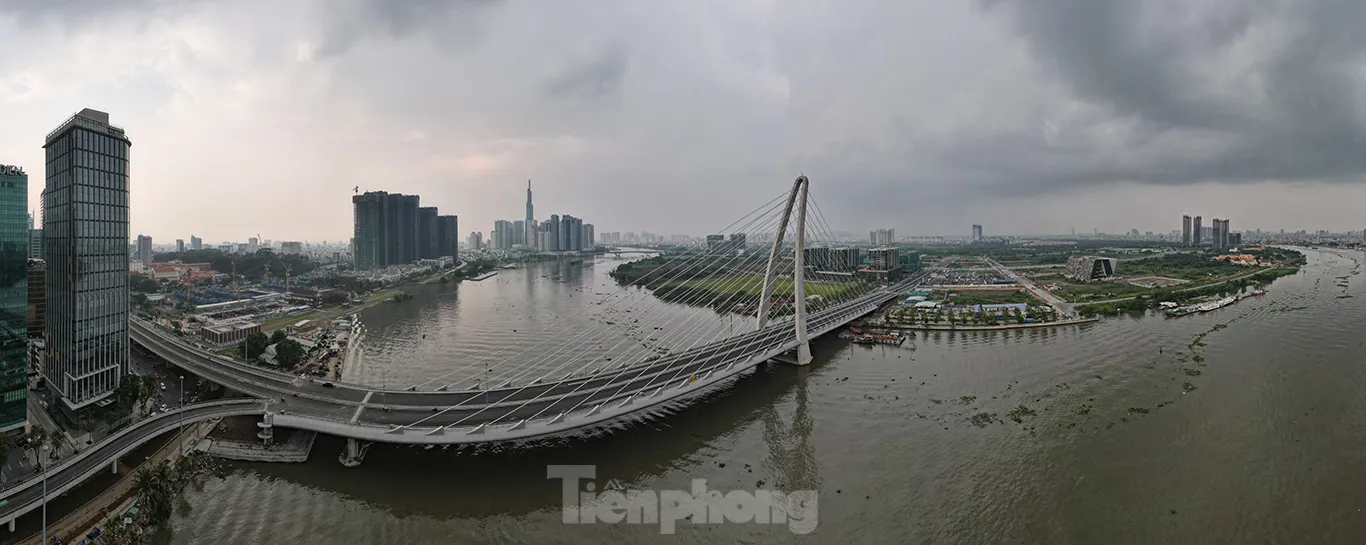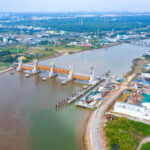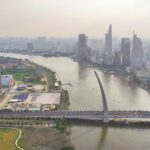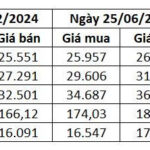On June 25th, the Ho Chi Minh City People’s Committee organized a conference to announce the Master Plan for Ho Chi Minh City until 2040, with a vision towards 2060. The conference was held in a hybrid format, with 168 offline and online endpoints. This event also marked the experimental deployment of digital platforms serving a two-tier government at 168 wards, communes, and special districts of the new Ho Chi Minh City.
Attending the conference were Mr. Nguyen Van Nen, Politburo member and Secretary of the Municipal Party Committee; Mr. Nguyen Van Got, member of the Party Central Committee, Deputy Secretary of the Party Committee, and Chairman of the Municipal People’s Committee; and Mr. Nguyen Tuong Van, Deputy Minister of Construction.
Regional Linkages Established
Speaking at the conference, Mr. Bui Xuan Cuong, Vice Chairman of the Municipal People’s Committee, said that after more than ten years of implementing the Master Plan for Ho Chi Minh City construction, approved by the Prime Minister in Decision No. 24/QD-TTg dated January 6, 2010, adjusting the master plan for Ho Chi Minh City construction was an objective necessity and a strategic move.

Mr. Bui Xuan Cuong, Vice Chairman of the Ho Chi Minh City People’s Committee, speaks at the conference. Photo: NLĐ.
Since the Prime Minister approved the plan to establish the Ho Chi Minh City Master Plan adjustment in 2018, the city has proactively and actively coordinated with ministries, central agencies, experts, scientists, international organizations, businesses, and the community to develop the Ho Chi Minh City Master Plan adjustment until 2040, with a vision towards 2060, according to the task of adjusting the master plan approved by the Prime Minister in Decision No. 1528/QD-TTg dated September 14, 2021.
Mr. Cuong affirmed that, realizing the role of implementing national and regional linkage strategies in socio-economic development, Ho Chi Minh City has proactively worked and closely coordinated with neighboring provinces such as Binh Duong, Dong Nai, Long An, Tay Ninh, Ba Ria – Vung Tau, and Tien Giang to exchange and unify development orientations, infrastructure connectivity, environmental protection, and effective exploitation of the region’s potential and advantages.
On June 11, the Prime Minister signed Decision No. 1125/QD-TTg approving the Ho Chi Minh City Master Plan adjustment until 2040, with a vision towards 2060.

The Ho Chi Minh City Master Plan illustrates the connectivity of transport infrastructure, environmental protection, and effective exploitation of the potential and advantages of the Southern Key Economic Region.
Creating a Strong Momentum
Vice Chairman Bui Xuan Cuong said that the approved plan not only meets legal requirements (according to the Law on Urban Planning, master plans need to be reviewed every five years) but also provides a solid and important legal basis and serves as a compass for Ho Chi Minh City to concretize development goals in the new era.
It maximizes the city’s potential and advantages and effectively utilizes specific mechanisms and policies to create a strong momentum for Ho Chi Minh City’s breakthrough and sustainable development and the Southern Key Economic Region.
The key objectives of the plan include developing a multi-center urban space, promoting creativity and high interactivity, and linking it with the development of knowledge-based and high-tech economies. It also involves organizing a system of infrastructure connecting the region, enhancing intra-city and international connectivity, and developing the city towards public transport-oriented development. Additionally, it aims to preserve and promote the unique architectural, landscape, and ecological values of Ho Chi Minh City, especially the characteristic features of a riverine and coastal urban area, adapting to climate change.

The approved Ho Chi Minh City Master Plan has been studied in the context of regional connectivity, considering the relationship between Ho Chi Minh City and other provinces in the Southeast region regarding development models, population, land use, transport infrastructure, and technical infrastructure, within the framework of the region’s urban system.
“The Ho Chi Minh City Master Plan adjustment until 2040, with a vision towards 2060, is an important basis for immediately organizing the formulation of subdivision plans and detailed plans, promptly serving management tasks and receiving and approving investment, ensuring no ‘gap’ and ‘waiting’ in urban development management to serve the people, businesses, and society,” affirmed Mr. Cuong.
“It will also be the foundation for formulating the Master Plan for the consolidated Ho Chi Minh City in the near future, as the city joins the country in preparing for the arrangement of organizational apparatus, administrative units, and focusing all efforts on operating and developing a new, consolidated Ho Chi Minh City, including Binh Duong and Ba Ria-Vung Tau,” he added.
The Ho Chi Minh City Master Plan until 2040, with a vision towards 2060, sets the goal of Ho Chi Minh City becoming a global, civilized, modern, and compassionate city, with a development level on par with major cities in the world. Ho Chi Minh City aims to be the economic, financial, and service center of Asia, serving as a growth pole and driving force for the development of the Southern region and the country.
The city strives for a high standard of living and quality of life, with distinctive economic and cultural development, attracting financial institutions and international economic groups. The urban model is a polycentric city with diverse ecological spaces, harnessing the development potential of the Saigon River and nine radial axes (four east-west axes and five north-south axes), and spreading economic opportunities through three belts and a coastal economic corridor.
Ho Chi Minh City is organized into approximately 60 live-work basins. This involves harnessing the potential and opportunities of the urban subdivisions to develop each area into live-work basins (within a radius of about 5 km, with a larger radius in rural areas), associated with commercial, service, and employment centers in each area or urban center (with regional, national, international, and city-level roles).
The Secret Behind Coteccons’ Astonishing Leap: Climbing 72 Spots on the Fortune Southeast Asia 500 Rankings
The 2025 Fortune Southeast Asia 500 rankings, unveiled by Fortune – the world’s most reputable business magazine – revealed a remarkable leap for Coteccons. In just one year, the company soared 72 places, climbing from 376th to 304th among the top 500 companies in the region, and claiming the top spot in the Vietnamese construction industry.
“Accelerating the International Finance Center’s Progress.”
“Ho Chi Minh City and Da Nang are expediting the development of international financial centers, marking a pivotal step towards Vietnam’s economic growth and global recognition. This ambitious endeavor underscores the cities’ commitment to fostering a thriving business environment, attracting foreign investments, and solidifying their stance as prominent economic powerhouses in the region.”
“Ho Chi Minh City Pioneers Permit Exemption for Private Residential Construction”
By the end of this year, Thu Duc City is set to witness the approval of detailed planning schemes with a ratio of 1/500 for select areas, along with a pilot program exempting standalone residential construction from permit requirements. If this pilot program proves successful, the exemption of building permits for standalone residential construction will be officially implemented from January 1, 2026, onwards.













































